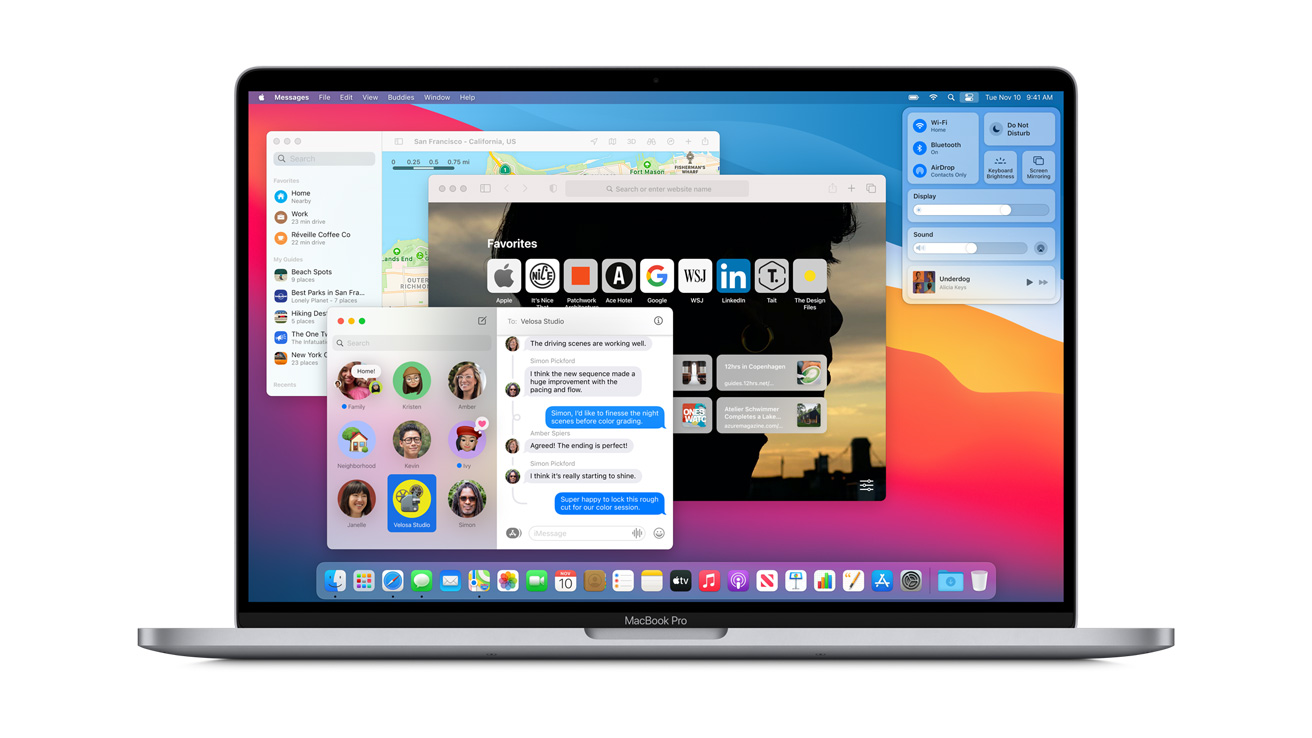- Time Machine is the backup utility available on Mac operating systems Leopard (10.5) or above. It is generally used for personal backups, rather than professional, system backups. You can learn how to use Time Machine by connecting a backup drive to your Apple computer and configuring it according to your preferences.
- Explore the world of Mac. Check out MacBook Pro, MacBook Air, iMac, Mac mini, and more. Visit the Apple site to learn, buy, and get support.
- SecondBar has all the features of OS X's built-in menu bar, along with being drag-able and having the half-and-half resizing features of Windows 7's Aero Snap.The app is still in its super-early.
- Set System Date in Mac OS X from Command Line with a Central Time Server For ntpdate, which sets the date and time based on the time from a central server accessed via the internet, you'd want to point it either at Apple's time servers or pool.ntp.org as follows to get the exact time: sudo ntpdate -u time.apple.com.
Use Time Machine, the built-in backup feature of your Mac, to automatically back up your personal data, including apps, music, photos, email, and documents. Having a backup allows you to recover files that were deleted, or that were lost because the hard disk (or SSD) in your Mac needed to be erased or replaced. Learn how to restore your Mac from a backup.
Use Time Machine, the built-in backup feature of your Mac, to automatically back up your personal data, including apps, music, photos, email, and documents. Having a backup allows you to recover files that were deleted, or that were lost because the hard disk (or SSD) in your Mac needed to be erased or replaced.

Create a Time Machine backup
To create backups with Time Machine, all you need is an external storage device. After you connect the storage device and select it as your backup disk, Time Machine automatically makes hourly backups for the past 24 hours, daily backups for the past month, and weekly backups for all previous months. The oldest backups are deleted when your backup disk is full.
Connect an external storage device
Connect one of the following external storage devices, sold separately. Learn more about backup disks that you can use with Time Machine.
- External drive connected to your Mac, such as a USB or Thunderbolt drive
- Network-attached storage (NAS) device that supports Time Machine over SMB
- Mac shared as a Time Machine backup destination
- AirPort Time Capsule, or external drive connected to an AirPort Time capsule or AirPort Extreme Base Station (802.11ac)
Select your storage device as the backup disk
- Open Time Machine preferences from the Time Machine menu in the menu bar. Or choose Apple menu > System Preferences, then click Time Machine.
- Click Select Backup Disk.
Enjoy the convenience of automatic backups
After you select a backup disk, Time Machine immediately begins making periodic backups—automatically and without further action by you. The first backup may take a long time, but you can continue using your Mac while a backup is underway. Time Machine backs up only the files that changed since the previous backup, so future backups will be faster.
To start a backup manually, choose Back Up Now from the Time Machine menu in the menu bar. Use the same menu to check the status of a backup or skip a backup in progress.
Learn more
- Learn about other ways to back up and restore files.
- If you back up to multiple disks, you can press and hold the Option key, then choose Browse Other Backup Disks from the Time Machine menu.
- To exclude items from your backup, open Time Machine preferences, click Options, then click the add (+) button to add an item to be excluded. To stop excluding an item, such as an external hard drive, select the item and click the remove (–) button.
- If using Time Machine to back up to a network disk, you can verify those backups to make sure they're in good condition. Press and hold Option, then choose Verify Backups from the Time Machine menu.
Apple began phasing in the use of its SSD-friendly APFS file system with High Sierra for SSD-only Macs, and then upgraded Fusion Drive-based Macs in Mojave. In Big Sur, Time Machine volumes can finally be formatted with APFS, too. But in this transition, one capability was quietly lost: APFS volumes cannot be shared for network access via Apple's relatively ancient Apple Filing Protocol (AFP).
AFP dates to the pre-OS X days, with a version appearing in System 6 in the late 1980s. As with most older protocols, it got long in the tooth, and Apple went from just supporting the Windows and Linux world's SMB to shifting to it as the only built-in sharing method. Way back in OS X 10.9 Mavericks, Apple began moving away from AFP in favor of the industry-standard SMB, although it still hasn't removed support.

Create a Time Machine backup
To create backups with Time Machine, all you need is an external storage device. After you connect the storage device and select it as your backup disk, Time Machine automatically makes hourly backups for the past 24 hours, daily backups for the past month, and weekly backups for all previous months. The oldest backups are deleted when your backup disk is full.
Connect an external storage device
Connect one of the following external storage devices, sold separately. Learn more about backup disks that you can use with Time Machine.
- External drive connected to your Mac, such as a USB or Thunderbolt drive
- Network-attached storage (NAS) device that supports Time Machine over SMB
- Mac shared as a Time Machine backup destination
- AirPort Time Capsule, or external drive connected to an AirPort Time capsule or AirPort Extreme Base Station (802.11ac)
Select your storage device as the backup disk
- Open Time Machine preferences from the Time Machine menu in the menu bar. Or choose Apple menu > System Preferences, then click Time Machine.
- Click Select Backup Disk.
Enjoy the convenience of automatic backups
After you select a backup disk, Time Machine immediately begins making periodic backups—automatically and without further action by you. The first backup may take a long time, but you can continue using your Mac while a backup is underway. Time Machine backs up only the files that changed since the previous backup, so future backups will be faster.
To start a backup manually, choose Back Up Now from the Time Machine menu in the menu bar. Use the same menu to check the status of a backup or skip a backup in progress.
Learn more
- Learn about other ways to back up and restore files.
- If you back up to multiple disks, you can press and hold the Option key, then choose Browse Other Backup Disks from the Time Machine menu.
- To exclude items from your backup, open Time Machine preferences, click Options, then click the add (+) button to add an item to be excluded. To stop excluding an item, such as an external hard drive, select the item and click the remove (–) button.
- If using Time Machine to back up to a network disk, you can verify those backups to make sure they're in good condition. Press and hold Option, then choose Verify Backups from the Time Machine menu.
Apple began phasing in the use of its SSD-friendly APFS file system with High Sierra for SSD-only Macs, and then upgraded Fusion Drive-based Macs in Mojave. In Big Sur, Time Machine volumes can finally be formatted with APFS, too. But in this transition, one capability was quietly lost: APFS volumes cannot be shared for network access via Apple's relatively ancient Apple Filing Protocol (AFP).
AFP dates to the pre-OS X days, with a version appearing in System 6 in the late 1980s. As with most older protocols, it got long in the tooth, and Apple went from just supporting the Windows and Linux world's SMB to shifting to it as the only built-in sharing method. Way back in OS X 10.9 Mavericks, Apple began moving away from AFP in favor of the industry-standard SMB, although it still hasn't removed support.
In Big Sur, Apple dropped the ability to share volumes via AFP entirely, but even though Catalina retained AFP-sharing support, as noted above, APFS-formatted volumes could not be shared over AFP. macOS Sierra though Catalina 'fails silently' in this method, letting you turn on AFP in the Sharing preference pane's File Sharing section, even if there are no volumes that AFP can share. (Big Sur can still mount AFP-shared volumes.)
I suggest disabling AFP sharing on any Mac running Catalina or earlier versions that you no longer have HFS+ drives mounted or plan to mount in the future:
- Open the Sharing preference pane.
- Click the File Sharing item at left.
- Click the Options button.
- If you see an option for AFP, uncheck it. Check 'Share filse and folders using SMB' if it isn't selected.
- Click Done.
The only reason this typically matters, however, is on other Macs. When you have a stored alias on one Mac that points to another, and which was a connection originally made over AFP. The alias will still try to work if the other computer is sharing via AFP, even if the volume is no longer shared over AFP.
The solution?
- Delete your alias.
- In the Finder, choose Go > Network.
- Double-click the computer you want to share from.
- Enter login information for that Mac if prompted. (If may be stored in your Keychain and the login handled silently.)
- Double-click the volume you want to link to.
- Select the volume. See below for methods.
- Choose File > Make Alias or hold down Command and Option while dragging to create an alias.
Time Bender Mac Os 7
You can select the volume in step 6 in one of several ways:
Time Bender Mac Os Catalina
- In the Locations section of the sidebar, click the remote Mac, then in the resulting Finder window, double-click the volume you want to make an alias from. Navigate up one level and proceed to step 7.
- In Finder > Preferences, make sure that in the General tab you have selected 'Connected servers.' This will make any mounted drives appear on the Desktop, where you can select them in step 6 and proceed to step 7.
This Mac 911 article is in response to a question submitted by Macworld reader Gabriel.
Time Bender Mac Os X
Ask Mac 911
Time Bender Mac Os Download
We've compiled a list of the questions we get asked most frequently along with answers and links to columns: read our super FAQ to see if your question is covered. If not, we're always looking for new problems to solve! Email yours to mac911@macworld.com including screen captures as appropriate, and whether you want your full name used. Not every question will be answered, we don't reply to email, and we cannot provide direct troubleshooting advice.

